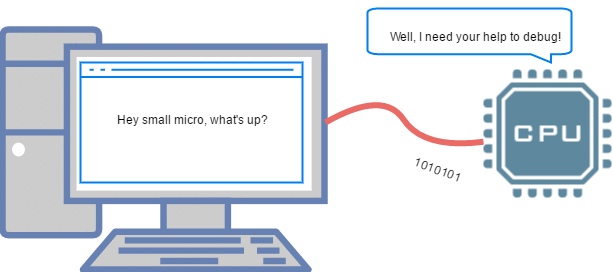Simple Serial Interface Protocol


This tutorial will show you step by step ways how you can perform serial port communication operation in your c# application with necessary code examples. Apex Sql Crack Keygen Idm there. The Serial Peripheral Interface bus. But it is different from the Synchronous Serial Interface (SSI) protocol. The polarities can be converted with a simple.
Overview of Serial Bus Serial is a common device communication protocol for instrument control because most computers and many remote instruments include at least one serial port. Single applications can be used across a variety of instruments with few modifications, reducing programming and test time. For more information on the serial protocol, including information on transfer speeds and important parameters, please refer to. Connecting and Setting up a Serial Instrument Control System Engineers typically use serial to transmit American Standard Code for Information Interchange (ASCII) data. All data types are converted to strings of ASCII characters and then transmitted bit by bit across the serial bus. For two ports to communicate, both the instrument and the controlling computer must have the same baud rate, data bit size, stop bits, and parity.
A basic serial instrument control system consists of three parts: 1. PC with a serial port 2. Serial cable 3. Serial instrument As mentioned, most computers include a serial port. The only hardware setup required is connecting the serial cable to the serial port on the PC and the serial port on the instrument. The serial instrument may include some hardware drivers or software utilities for communication, and should include documentation on the baud rate, packet size, stop bits, and parity bits that the instrument will use.
Additionally, check the National Instruments to see if LabVIEW drivers already exist for your instrument, as well has tutorials on how to use them. To confirm that the serial port on your computer is working properly, refer to, to see how to perform a serial loop back test. How to Create a VISA Resource for the Instrument in MAX With NI-VISA, communicating with your serial instrument is easy. To confirm that you are able to communicate with your instrument, open Measurement & Automation Explorer (MAX) found at Start>>Programs>>National Instruments>>Measurement & Automation. MAX Main Menu Expand the “Devices and Interfaces” subdirectory below “My System,” then expand “Serial & Parallel.” Below it you should see all the serial and parallel ports on your computer. In this example the computer has one serial port (“COM1”) and one parallel port (“LPT1”). Figure 2 shows the directory path to the serial port and the configuration window when COM1 is selected.
Serial Port Configuration Window From this configuration window you can change the VISA Resource Name for easier identification and you can also “Open VISA Test Panel” to send and receive communication from your serial instrument. Download Fontrouterman Untuk Symbian S60v3. Your instrument should have specific commands for collecting and transmitting data, and sending those commands to the instrument from the VISA Test Panel will confirm that you have a connection. Using NI-VISA to Communicate with Your Serial Instrument NI-VISA makes serial instrument programming fast and easy. VISA Open, VISA Read, VISA Write, and VISA Close are the basic VISA functions in LabVIEW used in the example VI in Figure 3. This example opens a VISA session to a serial device. A command is written to the device, and the response is read back.
In this example the specific command being sent is the ID query for the device. Check with your device manufacturer for your device command set. After all communication is complete, the VISA session is closed. LabVIEW Serial Program Using NI-VISA 4.
Instrument Control Software Articles and Related Links • • • • Kommentare.